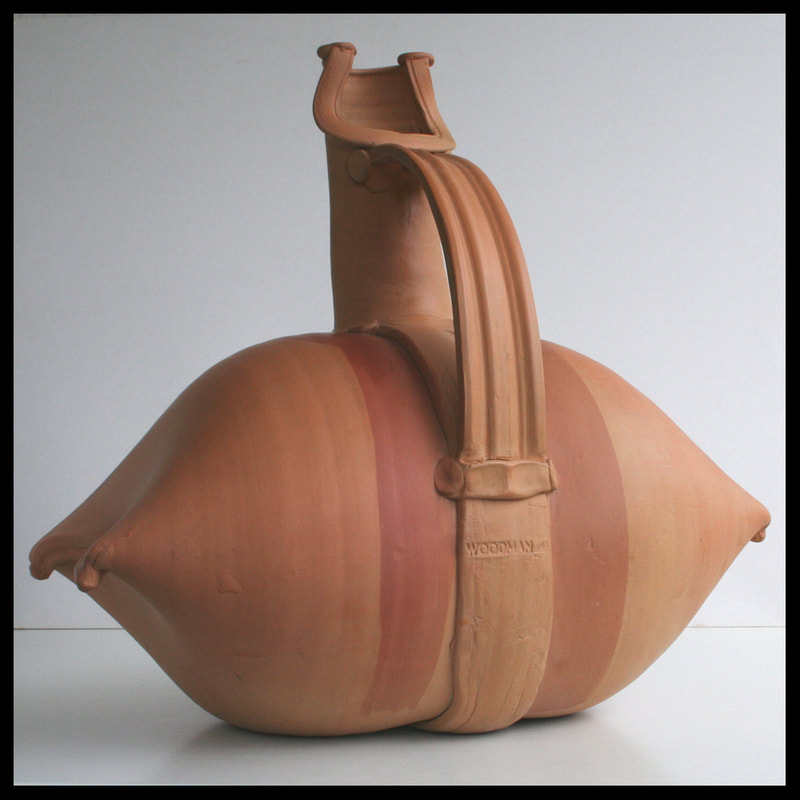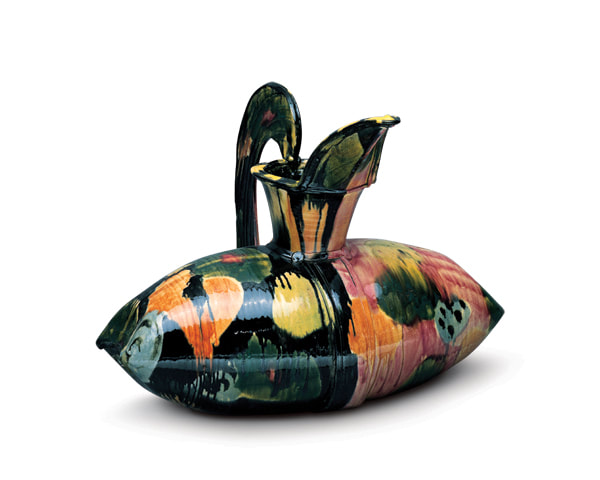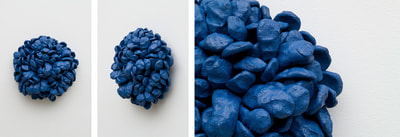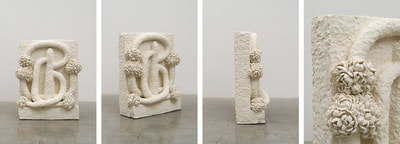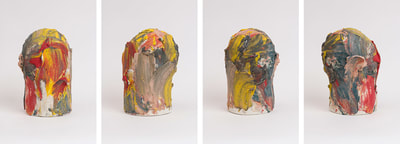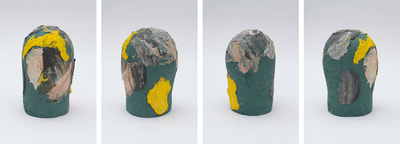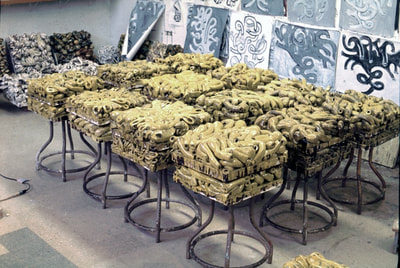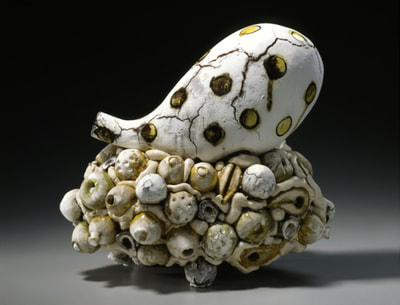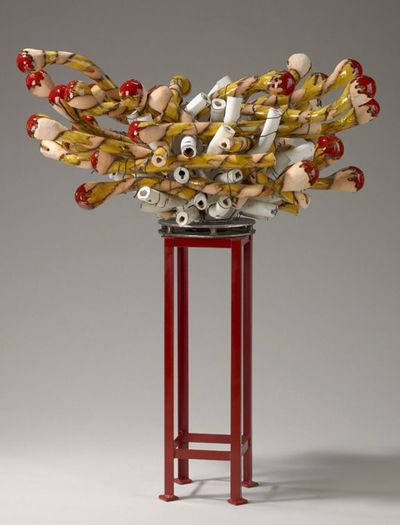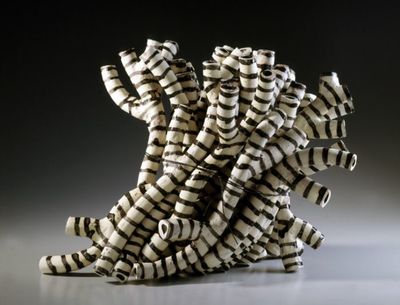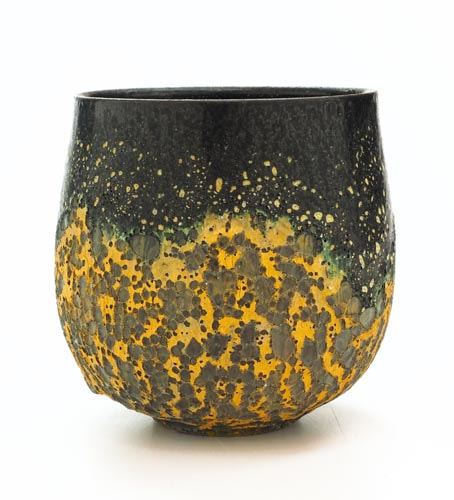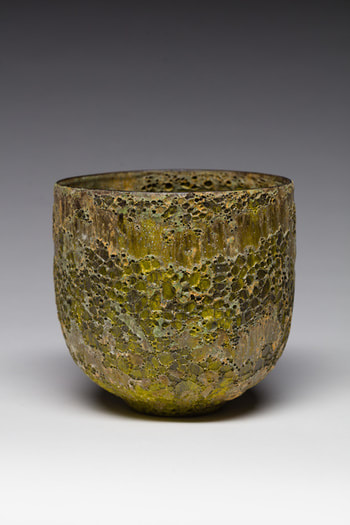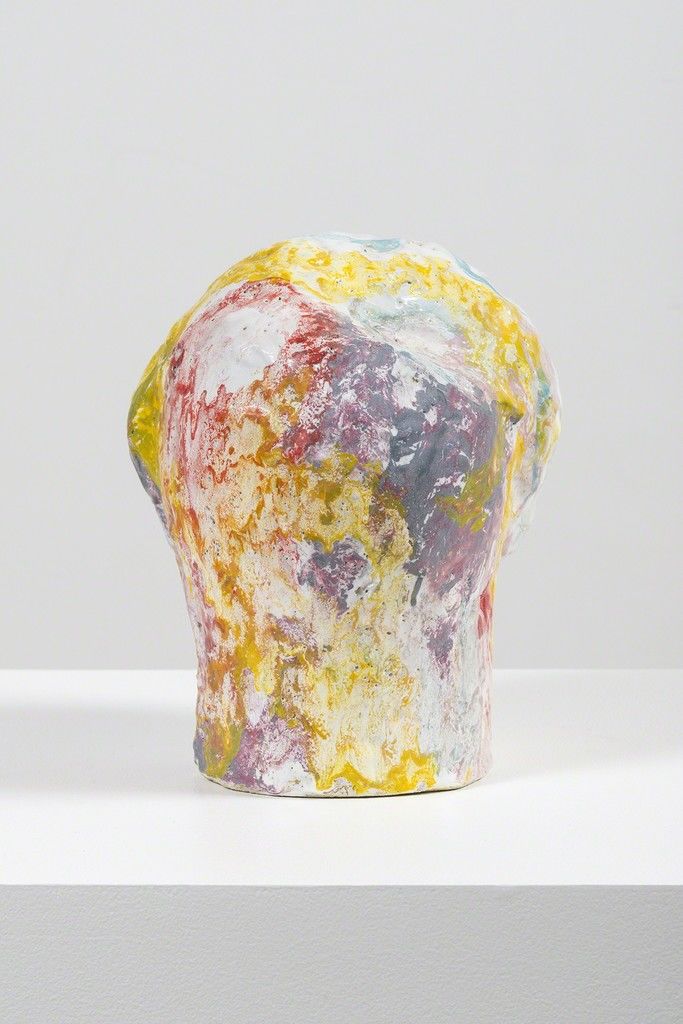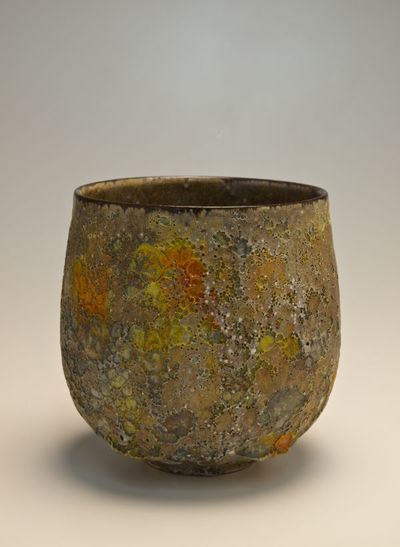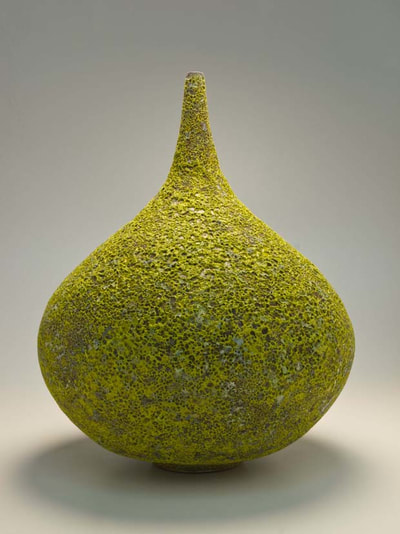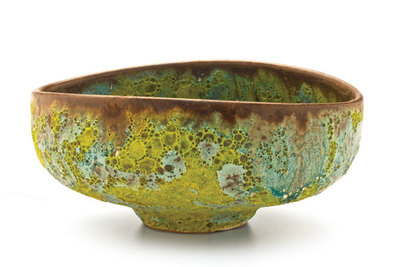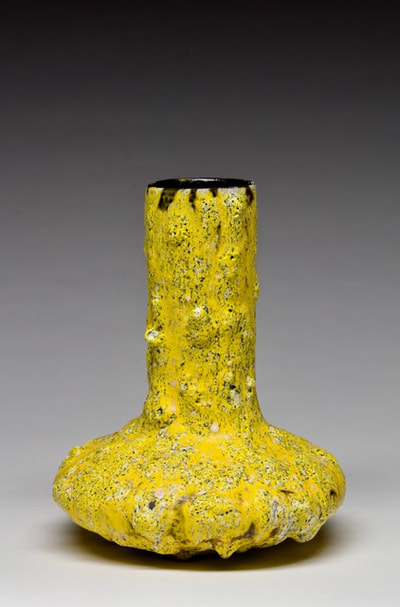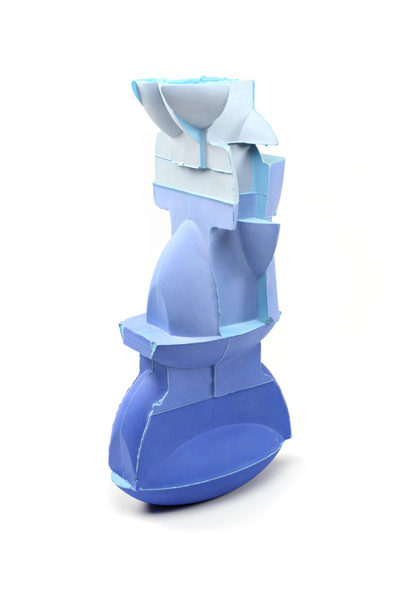|
This semester at Reedley College boundaries are being pushed by the incorporation of digital technology and 3D printing into our Ceramics Foundation experience. Students are exploring ways to make practical use of printed objects in the hands on studio atmosphere Students will be composing images using the foundational principles of design to create images and patterns that will be transformed into 3D printed objects. These objects will function as tools for studio production. Tools such extruder dies will be the first experience for students to explore. This simple tool is often overlooked because of the limitations of dies and all too generic shapes readily available. Extruder dies function best when produced with precision. Hand cut dies while possible are difficult for novice tool makers to execute, but with the aide of basic digital software such as photoshop, students can crete complex and precise patterns and compositions. Image such as the ones made for this purpose are easily translated into object (.obj) files and printed with our 3D printer into PLA plastic objects. These extruder dies can be used to produce sculptural elements, handles, rims, feet and amazingly complex coils and ribbons for straight forward construction. With simple approaches to translating images to object, students' concepts can quickly be put to use in the studio. Hands on construction methods are still used here at Reedley College, and with these new approaches to 3D printing the perceived limitations the often painfully slow printing process of a PLA printer is dissolved. We're finding practical ways to incorporate digital technology into the analog processes of a ceramics course. The ability to make tools that can quickly see and entire class room of students is a game changer in how we will incorporate the abilities and possibilities of digital prints into the educational and ceramic production environment. Below is a small sample of the process and what students will be playing with in the Intermediate Ceramics course at Reedley College.
0 Comments
Artist Biography:
Betty Woodman first became interested in crafts because her father was a woodworker. In high school, one ceramics course was sufficient to convince Woodman that she wanted to be a functional potter. Studying pottery at the School for American Craftsmen at Alfred University, she developed a strong interest in the history of ceramics. Her first job after graduating in 1950 was as a production potter, and that technical facility and experience were to be the foundation of her subsequent innovations. In 1952 Woodman traveled to Italy, where exposure to traditions such as majolica opened her eyes to the potential of clay. It was not until the seventies that Woodman completely abandoned her functional approach. Collaborating with important figures in the Pattern and Decoration movement, such as Joyce Kozloff and Cynthia Carlson, she began producing colorful, witty—and nonfunctional—vessels decorated with scenes from the Italian Renaissance or slathered with landscape clouds. Woodman's eccentric shapes and glazes are often appropriated from other cultures; her work in a sense functions as a very personal interpretation of art history. While the artist still produces human- and tabletop-size works, in recent years she has increased her scale, creating environmental installations for museums and galleries in the United States and abroad. Luce Artist Biography: Betty Woodman began her career as a potter making functional wares, but moved toward a more decorative and expressive style in the 1970s. Since 1951, the artist has spent a portion of every year living and working in Italy, where she has incorporated traditional forms, colors, and styles into her work. The shapes and designs of her pots come from Greek, Etruscan, European, and Asian cultures. Woodman's mature style focuses on ceramic pieces that appear functional but in reality are not. These serve as a support for her energetic painting techniques. Former Reedley College student Koen Vrij is making a name for himself where ever he goes. Take a look at the press release and take a closer look at his work as well as Alfred University. Great things come to those who pursue them. Koen VrijAlfred UniversityAs art critic Leah Ollman stated in her review of her 2015 exhibition at the Mark Moore Gallery in the Los Angeles Times:
"Limbs are entwined, tongues extended. Clay is rarely, if ever, this carnal. Some of the skin is mannequin-smooth but veined with cracks. Some seeps a pink foam or a pale fecal flood. Erotic pleasure plays a part here, but is only one of many competing charges." "Throughout this, and Smythe's other works, there is a violent fragmentation that zigzags between sexual fantasy and deathly dismemberment. With its human shipwreck of compromised flesh, "Young Unbecoming" brings to mind Gericault's "Raft of the Medusa," and exudes comparable, palpable urgency." "Smythe is a sculptor of struggle. Primal forces contend in the work, as do various aesthetic and formal dispositions. The sobriety of the relic is countered by the whimsy of glass and resin follies. Figures pallid and cadaverous lie upon a surface oozing with puddles in the happy hues of Easter eggs." "The friction between generation and decay, elegance and entropy, is what makes Smythe's work so alive and also so tough to digest. It doesn't go down easy, or at all. Stubborn, sensual, visceral -- it sticks."
Artist Statement
My work uses the vessel to explore various degrees of form, function, and sculptural considerations. From my interest in contemporary design, I playfully experiment with new solutions with the intention to conjure feelings for leisure, desire, and rarity embedded in domestic objects. Using the traditionally rigid process of mold making that is at the core of industrial production; I deconstruct and reassemble plaster mold positives to create a multitude of unique forms. The work is created organically, responding to the possibilities and limitations of the process and material. Through play, variation and modification, I look to change simple variables to create new methods and possibilities. I often reference domestic forms that are familiar, as a means to draw a broader connection to my work. These objects exist in the grey area between vessel and sculpture, and question the boundaries of design. Through my work I hope to explore the various degrees of function, from the practical to the sculptural, while generating new ideas for uses, forms, and processes. — Kyle Johns www.artaxis.org |



